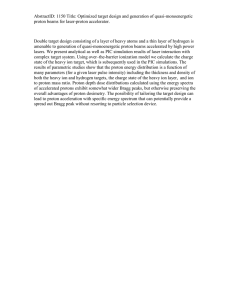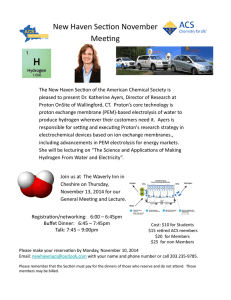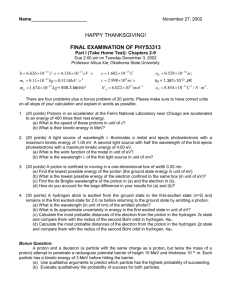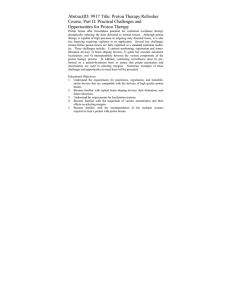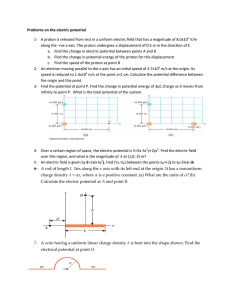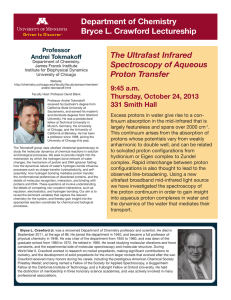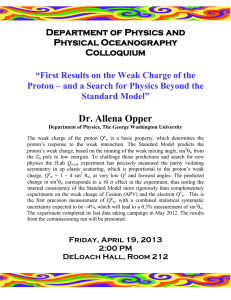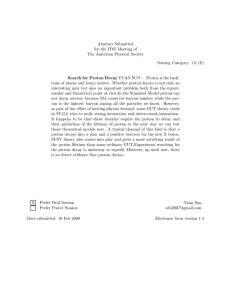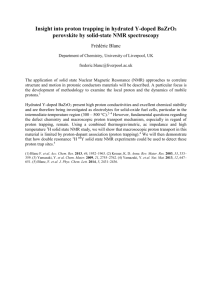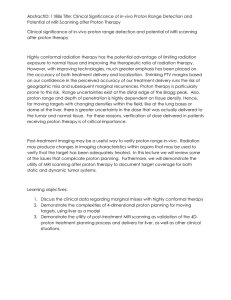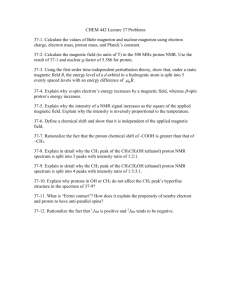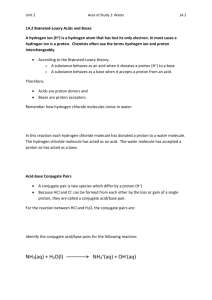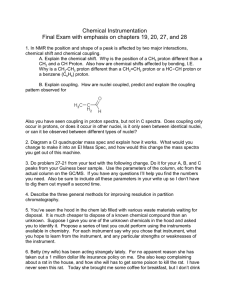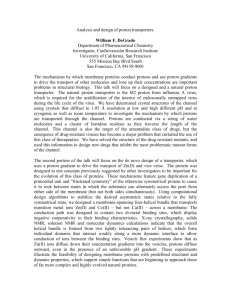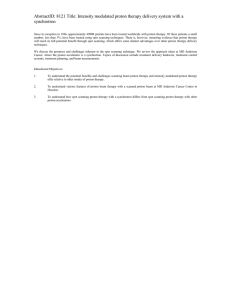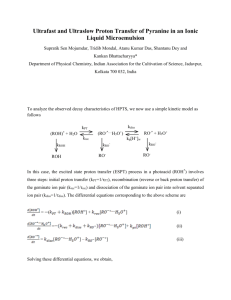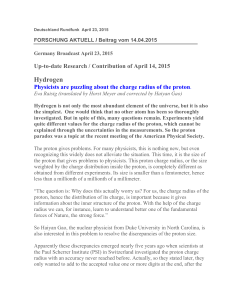Proton transport in aqueous and non-aqueous media studied by first
advertisement
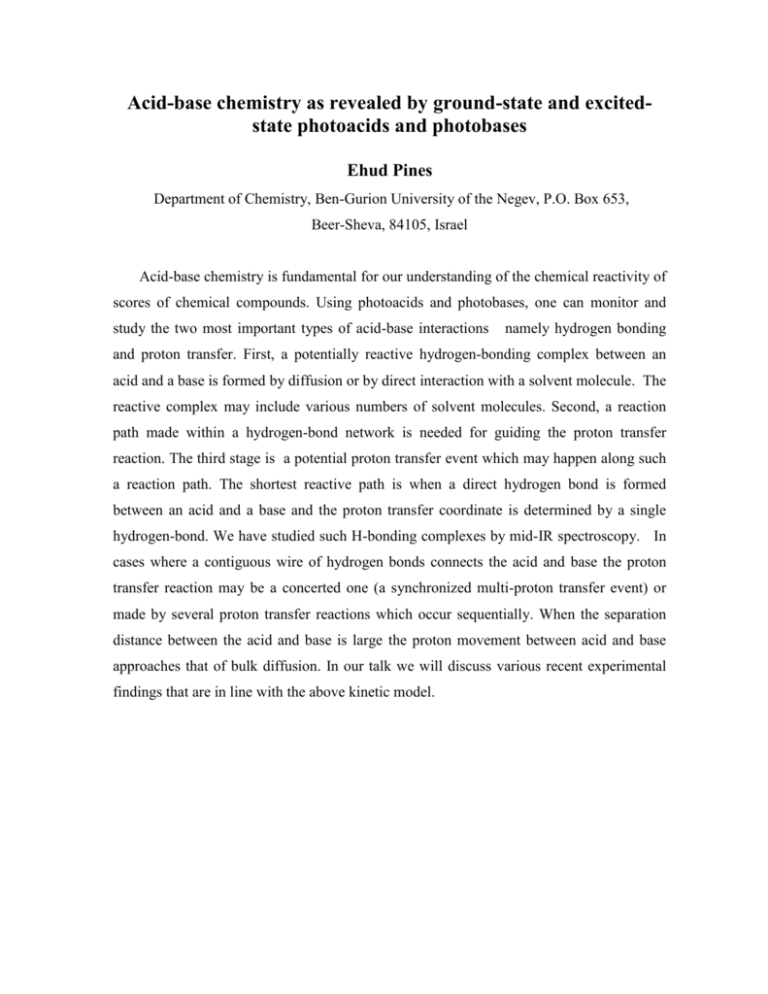
Acid-base chemistry as revealed by ground-state and excitedstate photoacids and photobases Ehud Pines Department of Chemistry, Ben-Gurion University of the Negev, P.O. Box 653, Beer-Sheva, 84105, Israel Acid-base chemistry is fundamental for our understanding of the chemical reactivity of scores of chemical compounds. Using photoacids and photobases, one can monitor and study the two most important types of acid-base interactions namely hydrogen bonding and proton transfer. First, a potentially reactive hydrogen-bonding complex between an acid and a base is formed by diffusion or by direct interaction with a solvent molecule. The reactive complex may include various numbers of solvent molecules. Second, a reaction path made within a hydrogen-bond network is needed for guiding the proton transfer reaction. The third stage is a potential proton transfer event which may happen along such a reaction path. The shortest reactive path is when a direct hydrogen bond is formed between an acid and a base and the proton transfer coordinate is determined by a single hydrogen-bond. We have studied such H-bonding complexes by mid-IR spectroscopy. In cases where a contiguous wire of hydrogen bonds connects the acid and base the proton transfer reaction may be a concerted one (a synchronized multi-proton transfer event) or made by several proton transfer reactions which occur sequentially. When the separation distance between the acid and base is large the proton movement between acid and base approaches that of bulk diffusion. In our talk we will discuss various recent experimental findings that are in line with the above kinetic model.

